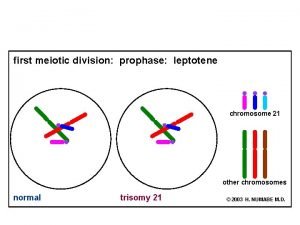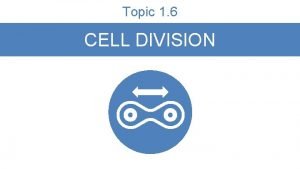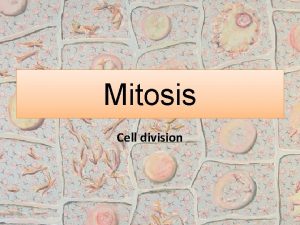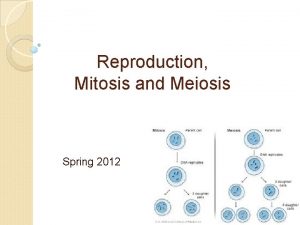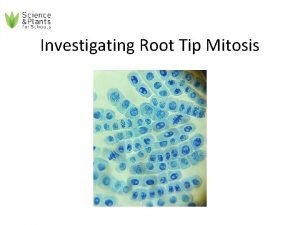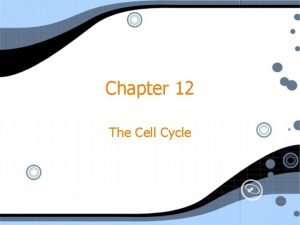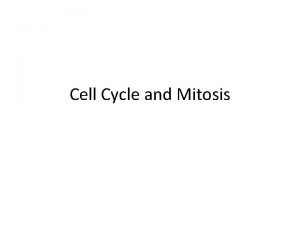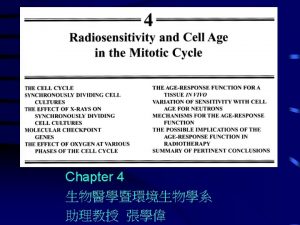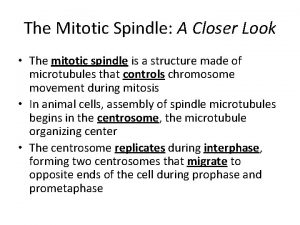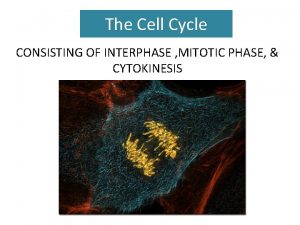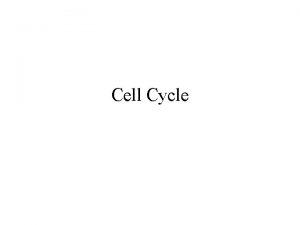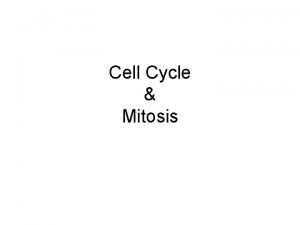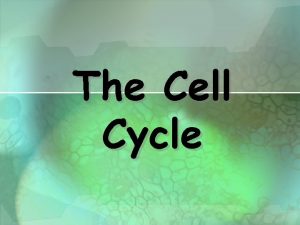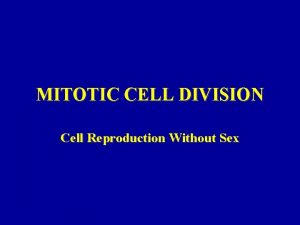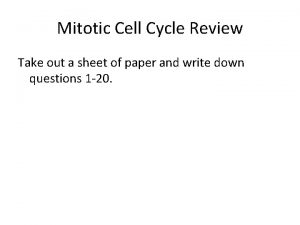CELL CYCLE M phase is mitotic or meiotic












- Slides: 12

CELL CYCLE • M phase is mitotic or meiotic phase • G 1 phase is first growth or gap phase • S phase is DNA synthesis phase • G 2 phase is second growth or gap phase

MITOTIC CELL DIVISION • It normally occurs in: • Haploid cells • Diploid cells • Polyploid cells • Vegetative cells • Reproductive cells

INTERPHASE • Centrosome is divided into two daughter centrosomes • Nuclear membrane is complete • Nucleolus is large • Chromatin fibres are in the form of chromatin network

INTERPHASE • • • G₀ PHASE Normal functioning of cell Preparation for G 1 phase G 1 PHASE Longest phase of interphase RNA synthesis Protein synthesis Increase in amount of cytoplasm

INTERPHASE S PHASE • Shortest phase of interphase • RNA synthesis • Protein synthesis • DNA Replication or chromosome duplication

INTERPHASE G 2 PHASE • Longer phase of interphase • RNA synthesis • Protein synthesis • Increase in amount of cytoplasm • Proteins synthesized are to be used during M phase • DNA is completely replicated • 1. Chromatid • 2. Kinetochore • 3. p arm • 4. q arm

PROPHASE • 1. Centrosome is divided into two daughter centrosome • 2. Nuclear membrane is broken down • Nucleolus becomes smaller • Chromatin fibres are condensed into chromonemata • Each chromonema consists of two chromatids

METAPHASE • Centrosomes are at opposite poles • Nuclear membrane is absent • Nucleolus is absent • Chromonemata are condensed into chromosomes • Chromosomes are arranged at the equator • The centromere at the poles and arms of chromatids are projected toward the poles

ANAPHASE • Centrosomes are at opposite poles • Nuclear membrane is absent • Nucleolus is absent • Chromatids are separated and are called daughter chromosomes • One set of daughter chromosomes moves towards one pole and the other set towards opposite pole

TELOPHASE • Nuclear membrane reappears • Nucleolus reappears • Chromosomes are decondensed • Constriction between two nuclei appears

CYTOKINESIS • Nucleus is formed • Nucleolus becomes prominent • Chromosomes are de-condensed to chromatin fibres • Two daughter cells are formed

